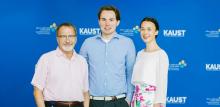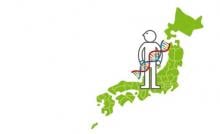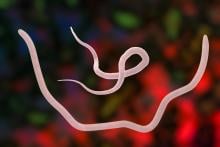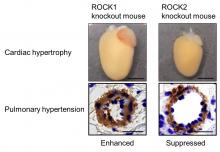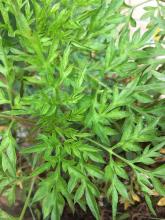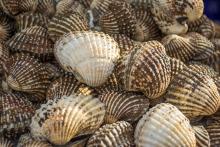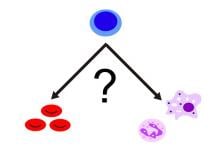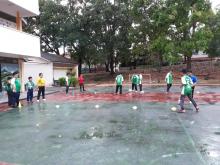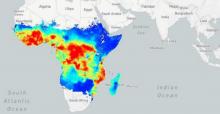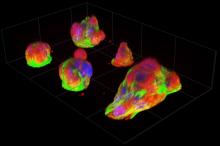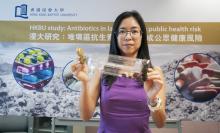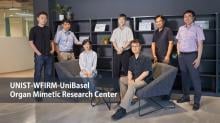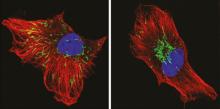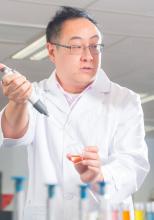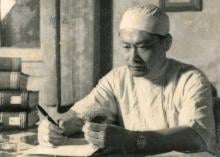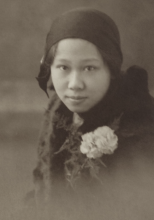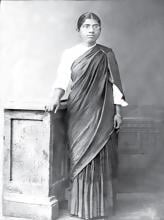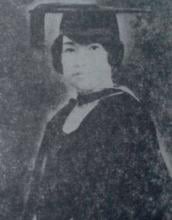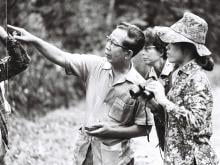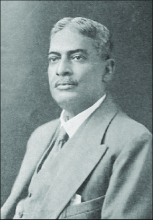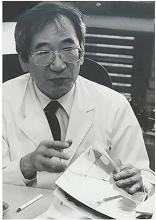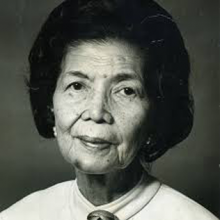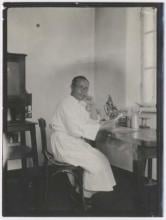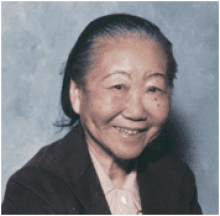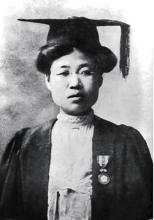Medicine
News

22 Oct 2018
Modeling changes in brain activity over time provides deeper insights into learning and behavioral responses.

17 Oct 2018
HIMSS AsiaPac18 will Feature Best Practice from Global Militaries in the International Military Health Information Technology (IMHIT) Track

16 Oct 2018
TOKYO, JAPAN (October 15, 2018)--The Global Health Innovative Technology (GHIT) Fund today welcomed Ono Pharmaceutical Co., Ltd. (Ono) to join GHIT as a new affiliate partner.
16 Oct 2018
Xin Gao’s research is building bridges between computer science and biology.
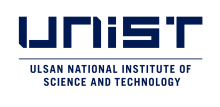
12 Oct 2018
The 2018 Genome Expo was held at South Korea's Ulsan National Institute of Science and Technology (UNIST) to share the results of 10,000 Korean Genome Project (Genome Korea) and the research work presented by international researchers.
12 Oct 2018
A genome bank for the Japanese population can better identify rare genetic variants and disease susceptibilities by adding samples from distant areas of the country.
12 Oct 2018
A research group at Tohoku University has made a significant discovery with positive implications for the development of bacteria-fighting drugs. The aminoacyl-tRNA site (A-site) of the 16S RNA decoding region in the bacterial ribosome looks promising for a new era of antibiotic drug development.
10 Oct 2018
Improved hygiene in the developed world could have a surprising consequence: higher rates of inflammatory bowel disease.

10 Oct 2018
South Korea's Ulsan National Institute of Science and Technology (UNIST) celebrates the grand opening of Cellular Responses to Metabolic Stress Research Center (CRMSRC).
09 Oct 2018
Investigations in mice have identified molecular processes that could be explored as targets for treatment of heart failure with pulmonary hypertension.
02 Oct 2018
Chemical analysis of the plant Cosmos caudatus Kunth reveals that it contains substances that can lower blood sugar naturally.
27 Sep 2018
Cockle shells could be potential scaffolds for tissue engineering.
26 Sep 2018
Japanese scientists have revealed a biological “switch” that influences whether an immature blood cell would develop into a red blood cell or a subtype of white blood cell called myeloid cells in response to infection or inflammation within the body.
24 Sep 2018
ScreenMen is a mobile web app that educates, motivates and empowers men to undergo evidence-based health screening. It was developed rigorously based on theories, evidence and needs assessment. It is currently undergoing a randomised controlled trial to determine its effectiveness in improving screening uptake in men.
24 Sep 2018
The incidence and prevalence of childhood obesity is increasing due to many risks factors, such as, food intake, increasing TV watching time and fewer activities. Children who are less active and do fewer physical or sports activities have been related to poor fitness level and excessive weight gain.
20 Sep 2018
Tools developed by Håvard Rue have transformed data analysis, interpretation and communication and are applied broadly: from modeling the spread of infectious diseases to mapping fish stocks.
19 Sep 2018
A new cell culture platform allows researchers to observe never-before-seen behaviors of live cancer cells under the microscope, leading to explanations of long-known cancer characteristics.

18 Sep 2018
Partnership signed at TechInnovation 2018, Singapore
18 Sep 2018
The large quantities of discarded antibiotics in Hong Kong’s landfills pose a pollution problem and a potential hazard to public health and ocean life, a new study by a Hong Kong Baptist University (HKBU) scholar says.
17 Sep 2018
A research center, affiliated with South Korea's Ulsan National Institute of Science and Technology (UNIST) will initiate a research collaboration to develop human organs-on-chips for new drug discovery.
12 Sep 2018
Uncovered details of a molecular pathway in cancer cells could lead to improved treatment.

11 Sep 2018
Research counters the expectation that organs of babies with congenital heart disease are smaller than average.
11 Sep 2018
A novel cosmetic product, designed to fill small to moderate facial scars, has shown promise in covering such deformities in a small group of patients.

07 Sep 2018
Converging the latest cancer discoveries around the world, FCS 2018 promises ground-breaking and innovative insights into cancer research. Join us and learn from the foremost cancer experts as they share their newest findings.

04 Sep 2018
~ British Heart Foundation to tackle the suffering and devastation caused by heart and circulatory diseases with historic research award ~
01 Sep 2018
International study develops innovative method to discover new anti-epileptic drug in record time, with potential to do the same for other diseases.

30 Aug 2018
Japan's largest B-to-B trade show specialised in pharmaceutical R&D and manufacturing concluded with huge success.
29 Aug 2018
Chemists at Hong Kong Baptist University (HKBU) have discovered the use of a metal compound that inhibits the enzyme closely associated with triple-negative breast cancer (TNBC), one of the most difficult forms of breast cancer to treat.
Researchers
Sorry, no researchers coming up for this topic.
- « first
- ‹ previous
- 1
- 2
- 3
- 4
Giants in history
Vietnamese surgeon Tôn Thất Tùng (10 May 1912 – 7 May 1982) developed a pioneering technique that reduced the risks and mortality rate of liver operations.
Michiaki Takahashi (17 February 1928 – 16 December 2013) was a Japanese virologist who developed the first chickenpox vaccine.
Irene Ayako Uchida’s (8 April 1917 – 30 July 2013) strides to understand genetic diseases such as Down syndrome paved the way for early screening of chromosomal abnormalities in foetuses.
Baron Kitasato Shibasaburo (29 January 1856 – 13 June 1931) was a Japanese physician and bacteriologist whose work led to a new understanding of preventing and treating tetanus, diphtheria and anthrax.
Maggie Lim (5 January 1913 – November 1995) was a Singaporean physician who promoted family planning and expanded the access to clinics to improve the quality of life for mothers and children in Singapore’s early days.
By isolating soil microorganisms and studying the compounds they produce, Satoshi Omura (born 1935) discovered almost 500 organic compounds with unique properties that were produced by these microorganisms, including many new antibiotics.
The founder of the Adyar Cancer Institute in India, Muthulakshmi Reddy (30 July 1886 – 22 July 1968), fought to uplift women and girls from impoverished situations.
Chinese-American virologist and molecular biologist Flossie Wong-Staal (27 August 1946 – 8 July 2020) was the first scientist to clone HIV and determine the function of its genes.
Maharani Chakravorty (1937 – 2015) was one of India’s earliest molecular biologists whose research paved the way for advances in the treatment of bacterial and viral infections.
Archana Sharma (16 February 1932 - 14 January 2008) conducted research into plant and human genetics that expanded the understanding of both botany and human health. In relation to botany, she uncovered the means by which asexually-reproducing plants evolve into new species.
The first Thai woman to receive a degree in medicine, Margaret Lin Xavier (29 May 1898 – 6 December 1932), is best remembered for her compassion towards her less privileged patients.
In 1915, pathologist Katsusaburo Yamagiwa and his research assistant Koichi Ichikawa became the first to prove that chronic exposure to chemicals can cause cancer.
In 1915, Koichi Ichikawa along with pathologist Katsusaburo Yamagiwa became the first to prove that chronic exposure to chemicals can cause cancer.
Husband and wife team, Kimishige (3 December 1925 – 6 July 2018) and Teruko Ishizaka (28 September 1926 – 4 June 2019) discovered the antibody class Immunoglobulin E (IgE) that triggers allergic reactions. They also discovered that IgE antibodies attach to white blood cells, known as mast cells, releasing histamine, which causes allergic reactions.
Husband and wife team, Kimishige (3 December 1925 – 6 July 2018) and Teruko Ishizaka (28 September 1926 – 4 June 2019) discovered the antibody class Immunoglobulin E (IgE) that triggers allergic reactions. They also discovered that IgE antibodies attach to white blood cells, known as mast cells, releasing histamine, which causes allergic reactions.
Japanese chemist Takamine Jokichi (3 November 1854 – 22 July 1922) founded the Tokyo Artificial Fertilizer Company, where he isolated a starch-digesting enzyme (named takadiastase) from the fungus Aspergillus oryzae.
Ground-breaking cancer researcher Kamal Jayasing Ranadive (8 November 1917 – 11 April 2001) advanced the understanding of the causes of leukaemia, breast cancer and oesophageal cancer through the use of animal models. She was also among the first to recognise how susceptibility to cancer is linked to tumour-causing interactions between hormones and viruses.
The research of Filipino pharmaceutical chemist Luz Oliveros-Belardo (3 November 1906 – 12 December 1999) focussed on essential oils and other chemicals derived from native Philippine plants.
Thai physician and conservationist Boonsong Lekagul (1907 – 1992) made major contributions to the preservation of his country’s wildlife.
Indian scientist and physician Upendranath Brahmachari (19 December 1873–6 February 1946) is best known for creating a drug called Urea Stibamine, used to safely and reliably treat visceral leishmaniasis (or Kala-azar), a severe infection caused by the Leishmania parasite.
Filipino chemist and pharmacist Manuel A. Zamora (29 March 1870 – 9 July 1929) is best remembered for his discovery of the tiki-tiki formula to combat beriberi, a disease caused by Vitamin B1 deficiency.
Korean parasitologist Seung-Yull Cho (16 November 1943 – 27 January 2019) is remembered largely for his pioneering works to control infections caused by helminthic parasites and his contribution to journal publishing.
Fe Villanueva del Mundo (27 November 1911 – 6 August 2011) was a Filipina paediatrician who founded the Philippines’ first paediatric hospital.
After witnessing death and suffering as a youth in his home village during World War II, Nguyễn Tài Thu (6 April 1931 – 14 February 2021) set his sights on alleviating pain by becoming a doctor. After studying Traditional Chinese Medicine in China in the 1950s, Thu returned to Vietnam to serve in military hospitals. Eventually, he became the country’s foremost practitioner of acupuncture, a technique he first learned by inserting needles into himself.
Minoru Shirota (April 23, 1899 – March 10, 1982) was a Japanese microbiologist who invented the popular fermented drink Yakult.
Wu Lien-teh (10 March 1879 – 21 January 1960) was a Malaysian-born doctor who invented a mask that effectively suppressed disease transmission. Winning the prestigious Queen’s Scholarship enabled Wu to become the first Chinese student to study medicine at the University of Cambridge.
David T. Wong (born 1936) is a Hong Kong-born American neuroscientist who is best known for discovering the antidepressant drug fluoxetine, better known as Prozac.
Indian organic chemist Asima Chatterjee (1917 to 2006) studied the medicinal properties of plant products, especially compounds known as vinca alkaloids.
Chika Kuroda (24 March 1884 – 8 November 1968) was a Japanese chemist whose research focussed on the structures of natural pigments.
Umetaro Suzuki (7 April 1874 – 20 September 1943) was a Japanese scientist best remembered for his research on beriberi, a disease caused by vitamin B1 deficiency, characterized by limb stiffness, paralysis and pain.
Salimuzzaman Siddiqui (19 October 1897 – 14 April 1994) was an artist and chemist from Pakistan whose research focused on natural products from plants.
Barry Paw (29 August 1962 – 28 December 2017) was a biologist and oncologist who discovered several novel genes and their functions in red blood cells.
Syed Qasim Mehdi (13 February 1941 – 28 September 2016) was a Pakistani molecular biologist who was a founding member of the Human Genome Diversity Project (HGDP), which assessed human diversity by studying human migration, mutation rates, relationships between different populations, genes involved in height and selective pressure.
Tsai-Fan Yu (1911 – 2 March 2007) was a Chinese-American physician and researcher who was the first female full professor at Mount Sinai School of Medicine. She discovered that gout, a condition characterized by the painful inflammation of joints, was caused by elevated levels of uric acid in the bloodstream.
Min Chueh Chang (10 October 1908 – 5 June 1991) was a Chinese-American biologist who studied fertilization in mammalian reproduction.
A Japanese surgeon, Tetsuzo Akutsu (20 August 1922 – 9 August 2007) built the first artificial heart capable of keeping an animal alive.
Ogino Ginko (3 March 1851 – 23 June 1913) was the first registered female doctor to practise modern medicine in Japan.
Esther Park (1877-1910), born Kim Jeom-dong, was the first female Korean physician to practise modern medicine in Korea and trained the first generation of Korean female doctors.


